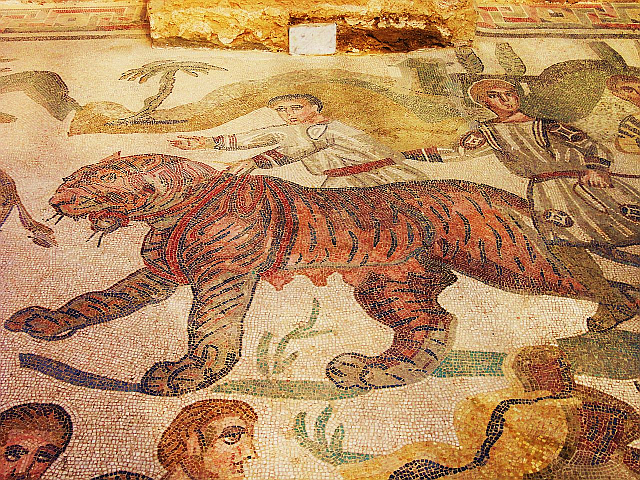
In reading the Book of Samuel as a literary artifact, we have gathered some indications of how tales from the Old Testament remained crucial to very different cultures and traditions over time. A brief review might be in order.
The David story employs a tremendous variety of styles and genres in the telling. At one moment, we're in an intimate drama of a child hearing a voice in the night; another sequence offers court intrigue worth of Hamlet; there's the fabulous legend of David and Goliath embedded into a series of scenes portraying Saul with vivid psychological realism. We have battle scenes, rapes, narrow escapes, loves, lusts, betrayals, power struggles -- and intertwined with these, complex overtones and allusions to earlier stories in Genesis, Exodus, Judges, etc. There are generational conflicts, subtle counselors, lying messengers, true oracles, demanding prophets, poems of tragic sorrow and psalms of triumphant thanks and praise. This multi-voicedness, this profusion of styles and genres (each with its own implied mode of reading) at times seems more like a post-modern bricolage than like a uniform (and unified) single work, e.g., the Iliad.

One effect of the continual shifting of mode is to place side-by-side stories that demand interpretive decoding and stories that appear to be literal representations of historical events. Take the case of speaking truth to power in
2 Samuel 12: Nathan's parable of the poor man and his ewe, which he narrates to David after the murder of Uriah. At first the king takes it literally -- and, clearly seeing the injustice, he is outraged. Only then does Nathan turn the tables, aiming the lesson directly at David --
"You are the man!" -- teaching him another way to read the parable.
In essence, to capture the conscience of the king, Nathan creates a kind of trap -- a figurative tale that speaks allegorically of something far from yet very near that conscience. This requires a guarded kind of storytelling, one that anticipates complications of interpretation.
Parabolic language turns away from the literal mode, but does so with purpose, a purpose that deeply involves the one to whom the story is addressed. Nathan is speaking to the king about something other than the king in order to speak truly about the king. The change in genre from literal history to admonitory fable has the reader squarely in its sights.
We also recall David and Jonathan's use of aimed arrows as code to carry a message having nothing to do with arrows. We may not be all that far from Dante's description of poetry as
una bella menzogna - a
beautiful lie.
The parable scene in 2 Samuel 12 turns out to be a turning point in the story of David. Before it, David lived a charmed life in which all his efforts, his cunning, his patience, came to fruition. After Nathan delivers this shattering insight into the truth, the king is like Adam -- the same man he was a moment ago, but entirely different: a fallen man.

The story returns to narrate a rush of concatenated events -- the rape of Tamar, the schemes of Ahitophel, the revolt and death of Absalom, the exile of David, civil strife and the usurpatory betrayals of Joab. Then, very near the end, in
2 Samuel 24, we have the scene in which, after ordering a census, David asks God to sacrifice him, instead of killing the people through the messenger/angel of the plague. The moment marks the term of the plague, the founding of a sacrificial site, and the end of the Book of Samuel. Even as the fall of David points back to the first man, it contains foreshadowings that could be interpreted as premonitions of a future "king of the Jews." Medieval readers would
pick up these cues.
As we've noticed previously, the odd detail of the
threshing floor in 2 Samuel 24 can be read as obliquely pointing to the act of winnowing wheat from chaff, meaning from fable, truth from fiction. It appears at the moment the story of David is coming to an end, as if to say: "Consider, reader, whether this is merely the tale of a long dead man, or whether it may concern you more nearly."
As Erich Auerbach long ago noted, more is in play in Old Testament narrative than the bright mythos of men and gods represented in action. Figures come alive in the Old Testament as vivid individuals in history, but also resonate backward and forward within a larger tapestry that tempts us with the promise of parable.




